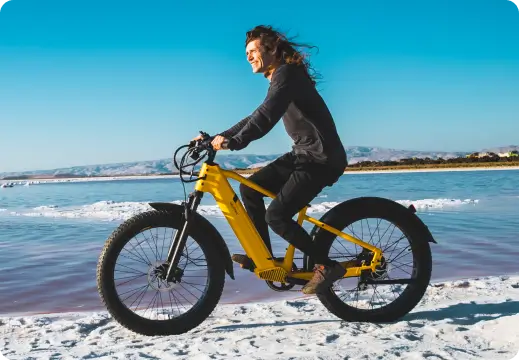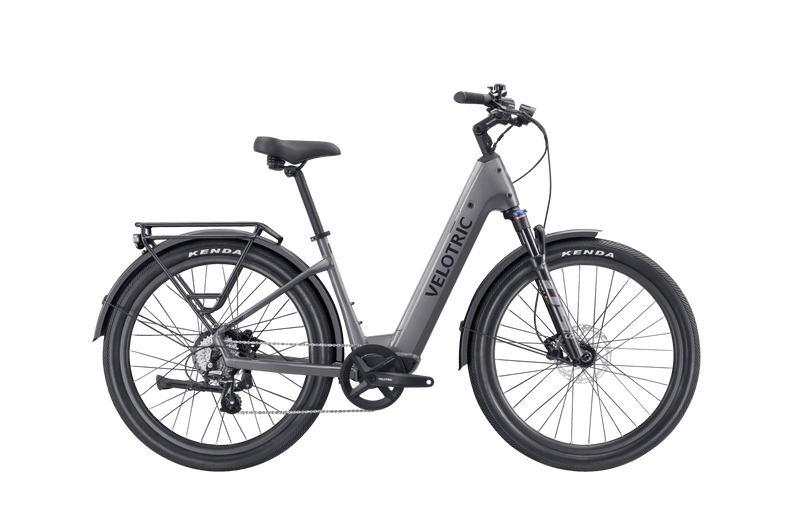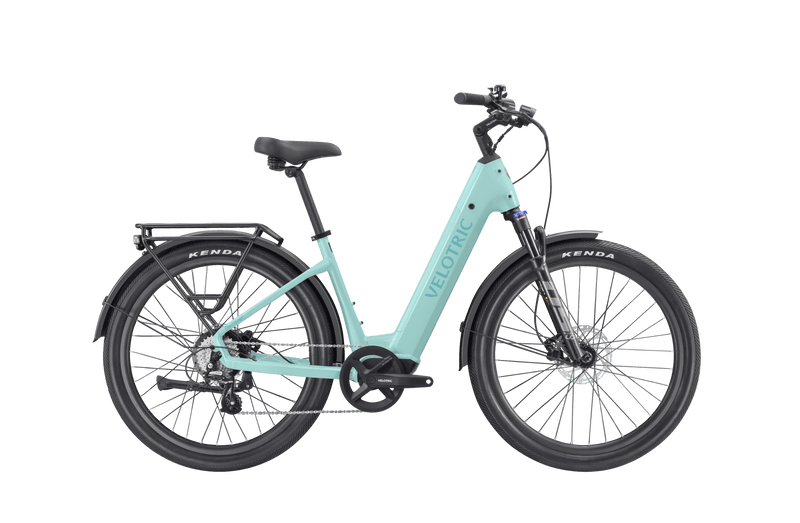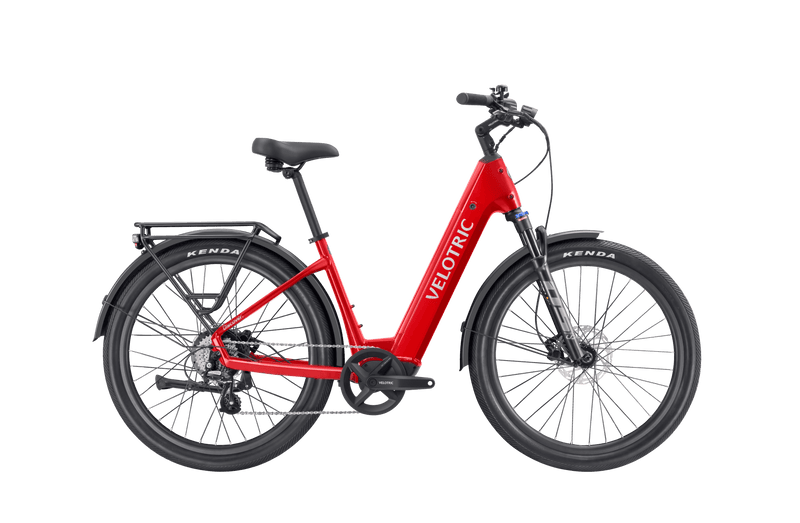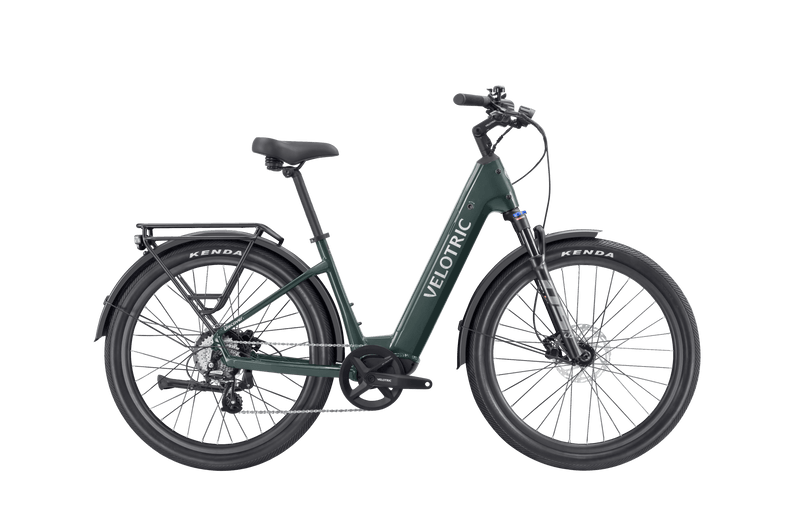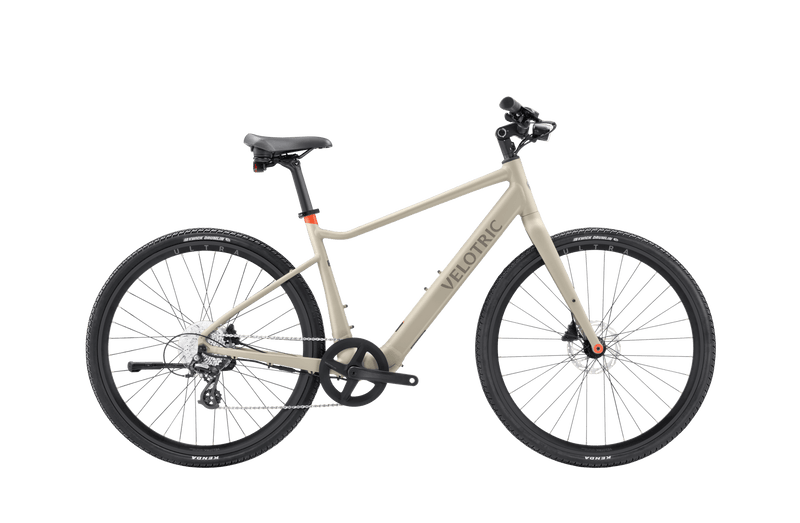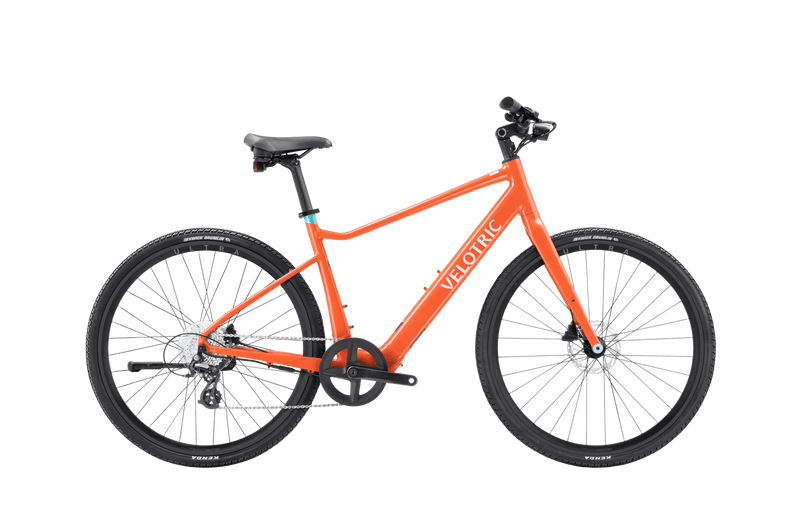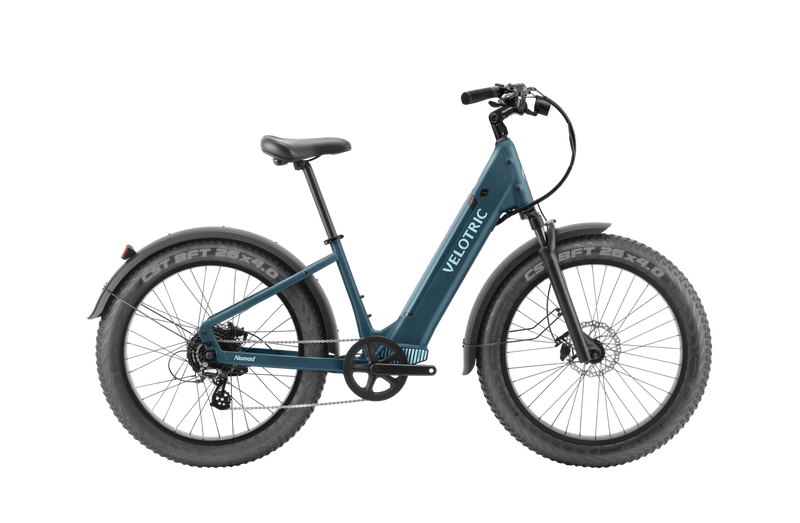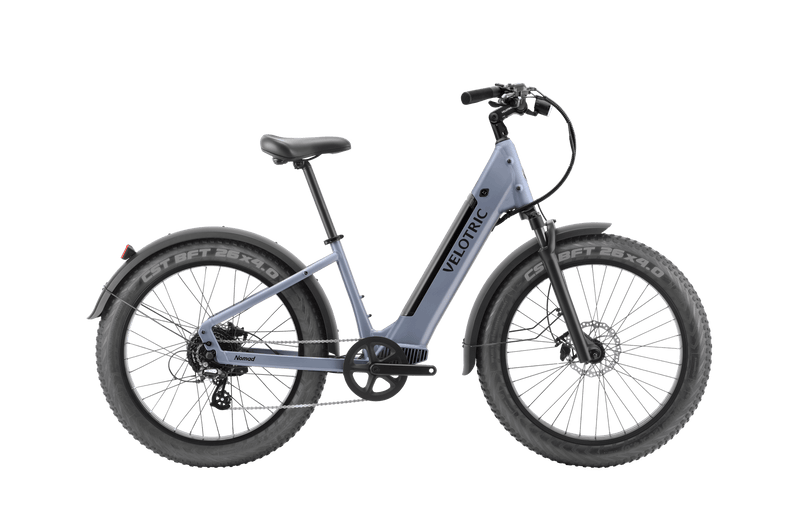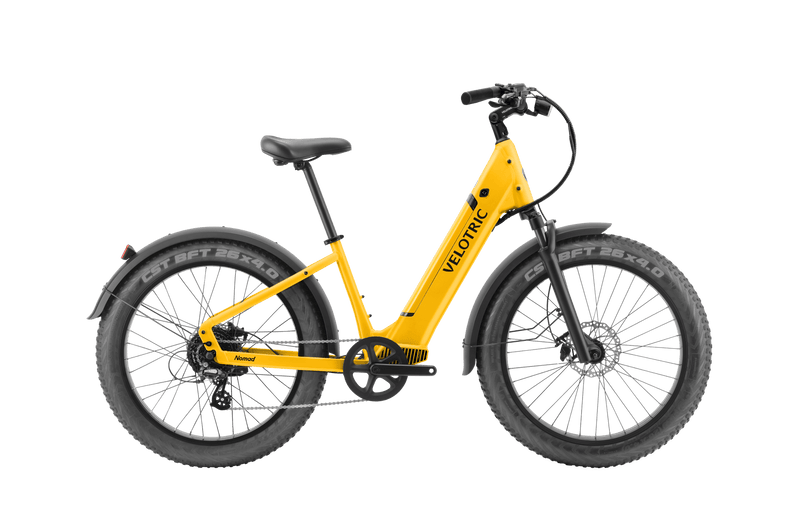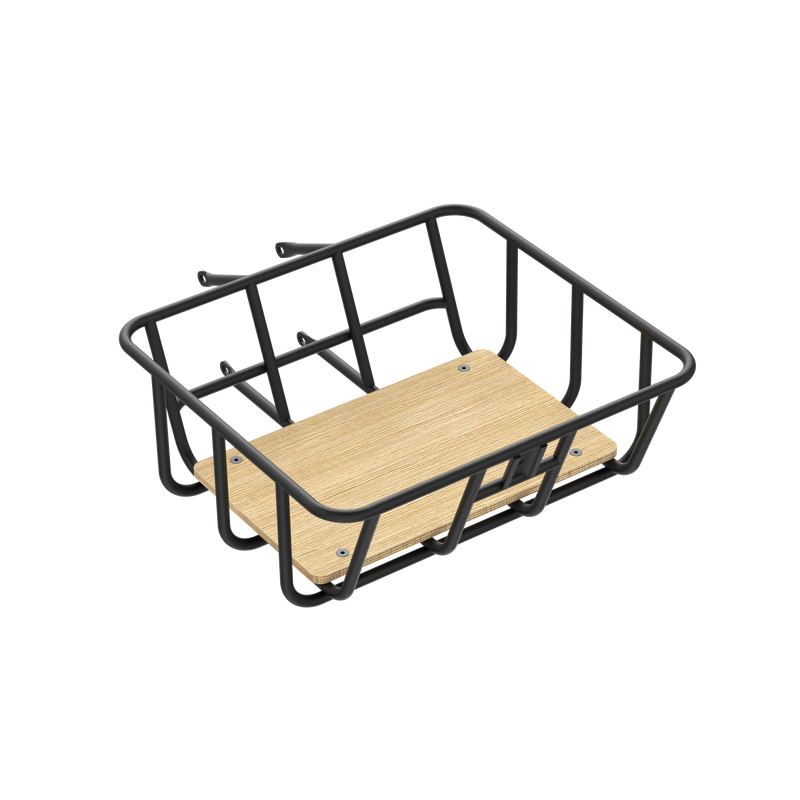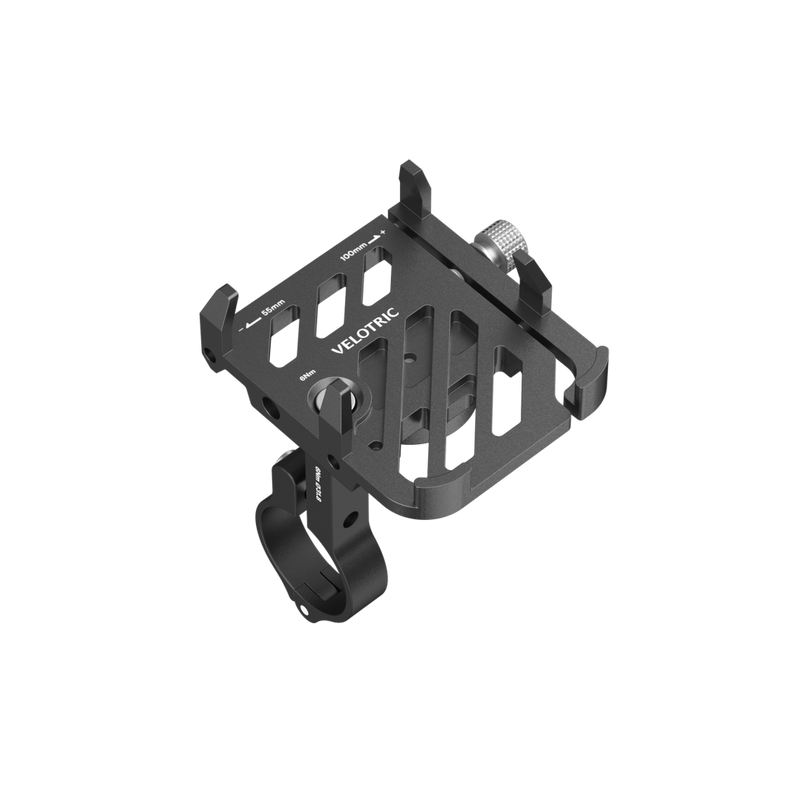Commuting isn’t fun for everyone. If you aren't a fan of the slog to get to work in the morning, you aren't alone. Countless studies have shown that commuting can interfere with our quality of life and subjective well-being.
The jump in stay-at-home work during the COVID-19 pandemic — and people's desire to work from home even after they were called back to the office — made it even clearer: A lot of us would rather slouch at home in our PJs than battle traffic in the mornings.
But what if commuting didn't have to be such a drag?
A bicycle makes it possible. When you're on two wheels, you don't have to cram into crowded public transportation or sit at red lights in bumper-to-bumper traffic jams. Plus, biking offers other benefits, like exercise.
That said, if you're going to take advantage of the rewards of biking to work, you've got to prepare. From researching your local helmet laws to ensuring you have a bike-friendly path to follow, it’s important to take some key steps first.
Below, we provide top tips to help you prepare for bicycle commuting. We also list some of the pros and cons of a bike commute, explain what to look for in a commuter bicycle, and highlight the unique perks of an electric bicycle.
What to consider before biking to work
You can't just hop on your bike and go. First, ensure a safe and comfortable route for a bike ride to work by implementing these commuting tips.
The distance to work
Start by calculating your work commute distance using a tool like Google Maps, inputting your start and target destinations. Click the "Cycling" symbol at the far right (scrolling over from the car, public transportation, walking, and ride services icons) to get a bike-friendly route and its distance.
Once you know the route’s mileage, determine whether it's a reasonable distance for you to cover by testing it out first. If you get exhausted after two miles and your distance to work is 10 miles, cycling may not be right for you.
The route you take to work
Distance is just one factor. You also want to ensure a safe bike route to work. For example, you shouldn't be riding on sidewalks, which are reserved for pedestrians (it's also illegal to ride on the sidewalk in some places).
Again, Google Maps can help. Use the app to input the route or area you want to cycle on the Google Map. At the top-right corner of the screen, click "Map Details" and then "Cycling." You'll see bike paths categorized according to type, such as bike lanes, unpaved trails, and bike-friendly roads.
Your expected travel time to work
Time is another consideration when deciding if cycling is right for you. Input your route in Google Maps to estimate how long it’ll take to bike. If it's a lot longer than driving or taking public transportation, you may not want to bike after all.
If you decide to bike, leave some extra time beyond the Google Maps estimated time frame. This will allow some leeway for extra steps like locking your bike at the office or changing into fresh clothes upon arrival.
Key safety tips for biking to work
Biking can be a safe and practical way to get to work. However, it does pose unique risks (for example, you don't have airbags, seatbelts, or other car safety features). Follow these bike safety tips to ride with confidence.
Wear a helmet
A bike helmet can help reduce the risk of serious head injuries in case you're in an accident. Additionally, some states or cities have helmet laws. Even if bike helmets aren't mandatory where you live, it's in your best interests to wear one.
It’s important to get a helmet that fits you properly. You can measure your head with a soft tape measure and consult the helmet brand's sizing chart to ensure you're getting it right. Different brands have different standard sizes, so do this for every brand.
Wear high-visibility clothing
One problem cyclists face on the road is that they are less visible than larger vehicles (like cars). For example, it's easier to end up in a vehicle's blind spot when you're on a slim bike. Wear high-visibility clothing (like a reflective vest) so it’s easier for motorists to see you. You can also affix reflective adhesive strips to your helmet.
It's also important to make yourself visible in other ways. Bike lights can make a big difference. Look for bikes with front and rear lights. If your bike doesn't come with these safety features, you can usually buy and install them on your own (or at a local bike shop).
Inspect your bike before riding
Even the best-quality bike can experience mechanical issues or damage. Before every ride, give your bike a quick once-over to make sure it's in good condition. This includes checking tire pressure, brakes, wheel quick-release levers, crank arms and pedals, and the stem and headset.
The bike's chain should have little to no surface rust and move freely through the bike's cogs without sticking or skipping. If your bike has any mechanical issues, fix them before riding again.
Cycle in the appropriate lanes
Above, we talked about how to ensure a safe and practical work route. Make sure you use it! If you've charted out a commute with bike lanes or bike-friendly roads, stick to them. Don't ride in places you shouldn't, such as sidewalks, where you increase the risk of hitting pedestrians.
Use hand signals
Hand signals tell drivers, other bicyclists, and pedestrians where you're headed. They're the equivalent of turn signals for a car. Using them helps keep you and those around you safe.
If you want to turn left, simply stick your left arm out straight to the side. If you want to turn right, stick your right arm out to the side — or stick out your left arm with the elbow bent so your hand points upward (keep your hand flat).
Pay attention while riding (no headphones)
Even if you take all the precautions above, it's important to remain vigilant while cycling. Research suggests that distracted cycling — similar to distracted driving — increases the risk of accidents.
Stay focused on the road, remain aware of your surroundings, and avoid distractions. For example, avoid talking on the phone (even on a hands-free device) or listening to music while on the road. Auditory distractions have been flagged as the most common concern for distracted bikers.
Pros and cons of biking to work
You've confirmed a bike-friendly work route and checked off the list of safety tips above. Great! But is a bike commute actually right for you? These pros and cons can help you decide whether to be a commuter cyclist.
Advantages of biking to work:
- Getting some exercise. Riding a bicycle is a great way to get some exercise on the way to work, boosting cardiovascular health. Biking also builds muscle in your legs and is considered a great exercise for people with bad knees.
- Boosting your mental health. That extra exercise you get on the way to work isn't just good for your body. It can also boost your mood. It's well-known that physical activity can help improve mental health and reduce the risk of issues like anxiety and depression. If you're lucky, your bike ride to work will take you off-road and through some green spaces, like a park. Research shows that spending time in nature can reduce stress.
- Helping the environment. Finally, biking is a great way to reduce your carbon footprint and support a healthier planet. In contrast, modes of transportation like cars and buses release greenhouse gasses into the atmosphere.
- Saving money. Biking to work can help you save money on costs like gasoline and car maintenance. At a time when fuel prices are fluctuating a lot, this can be a big relief.
Disadvantages of biking to work:
- The risk of getting sweaty. The drawback of a bike-to-work workout is that it means exerting yourself — which may mean breaking a sweat. Showing up to the office sweaty isn't the most professional look, so this can be an issue. To address it, bring a change of clothes and switch into your work clothes at the office. Arrive a little early to give yourself time to change.
- Potential for accidents. Biking can be risky. Riding in urban areas where you need to avoid pedestrians and cars can be especially treacherous. Minimize your risk by following the safety tips mentioned above. For example, using hand signals helps cars know when you want to turn, reducing the likelihood that they'll side-swipe you.
- The need for bike parking. Depending on your office location, finding a safe and secure spot to park your bike can be tricky. Bringing it into the office can also be inconvenient. Talk to your employer about installing bike racks. You can also try city bikes that fold up, which you can stash in your office.
What’s the best bike for commuting?
If you've reviewed the list of pros and cons and decided that biking to work is right for you, the next question is simple: What bike should you get?! Here are some things to consider when picking a bike for a work commute:
- Bike size. Bikes aren't one-size-fits-all. Ensure the bike frame is suitable for your height. Most models have height range specifications to ensure a healthy biking posture.
- Tire type. Some bikes, like mountain bikes, are designed for rougher terrain and have fatter tires for greater stability. These are ideal if your daily commute takes you on gravel or dirt paths. Road bikes with slim tires are better for urban riding.
- Suspension. If you're covering rough, bumpy terrain, you probably want full suspension for a softer ride. For city riding, front suspension is likely enough to keep you comfy.
- Brakes. Bike brakes come in rim, drum, and hydraulic disc systems. Hydraulic disc brakes offer better control and sharper stops, making for a safer commute to work.
- Gears or pedal assist. For traditional bikes, consider how many gears you need; low gears are fine for flat terrain, while higher gears are good for mountainous routes. For electric bicycles, consider pedal assist (which regulates how much help the electric motor gives you). A bike with five-level pedal assist is more versatile than one with three-level pedal assist.
- Safety features. Ensure that whatever bike you get has sufficient safety features, like bike lights and mirrors. For example, a bell is essential, allowing you to warn cars or pedestrians if they're in your path.
- Comfort features. Safety is the first concern — but it isn't the only concern! You also want to be comfortable on your ride. Look for perks like a padded bike seat, water bottle holder, and storage basket or rack to stash your work bag.
Are e-bikes good for commuting?
An electric bike can be a great way to get to and from work. E-bicycles have a built-in motor that helps power them forward when you’re pedaling. This gets you from point A to point B with less effort than a standard bike, reducing the risk of showing up to work sweaty.
You can adjust the bike's pedal assist level according to your needs. For example, you might engage a higher level of pedal assist on the way to work so you don't overexert yourself. Lower the pedal assist for a more vigorous workout on the way home — where you can show up sweaty without annoying your co-workers.
E-bikes can also help you ride further and faster thanks to pedal assist. If your commute is on the longer side, this can make an e-bike a preferable option to a traditional bike. For example, Velotric's Nomad 1 bike can go up to 55 miles on a single charge, while the Discover 1 can go up to 65 miles. The Nomad 1 bike has a slightly lower max distance range due to its weight (it is heavier and more powerful).
Even with pedal assist, e-bikes offer a good workout. E-biking provides a level of physical activity defined as "healthy" by the World Health Organization (WHO) and the American College of Sports Medicine (ACSM). You'll still get the physical and mental health benefits of exercise during your commute.
Last but definitely not least, research suggests that people's enjoyment levels when riding e-bikes are higher than when riding traditional bikes. This may be thanks to the pedal assist, which can help if you're feeling tired. Translation? Your commute to work is about to get a lot more fun!
Discover the best Velotric e-bikes for commuting to work
If you're ready to cycle to work, Velotric has the commuter bike solution for you. Our bikes’ battery system is certified by Underwriters Laboratories (UL 2271), a global safety agency, attesting to their quality and durability.
Each new bike comes with a 48V 14.1Ah rechargeable battery that recharges completely in only six hours. Charge it up in a single workday and ride home with a full battery.
If your route to work takes you across smooth surfaces, trust the Velotric Discover 1. The bike has five-level pedal assist, hydraulic disc brakes, and essential safety features, like lights.
If your commute has you covering rough terrain, like gravel paths, try our Velotric Nomad 1. This option has fatter tires for greater stability and a smoother ride. The Nomad 1 also has hydraulic disc brakes and five-level pedal assist.
Both the Discover 1 and Nomad 1 have two different frame sizes. The High Step frame is for riders from 5’6” to 6’9”, while the Step-Thru frame is for riders measuring 5’1” to 6’4”.






































